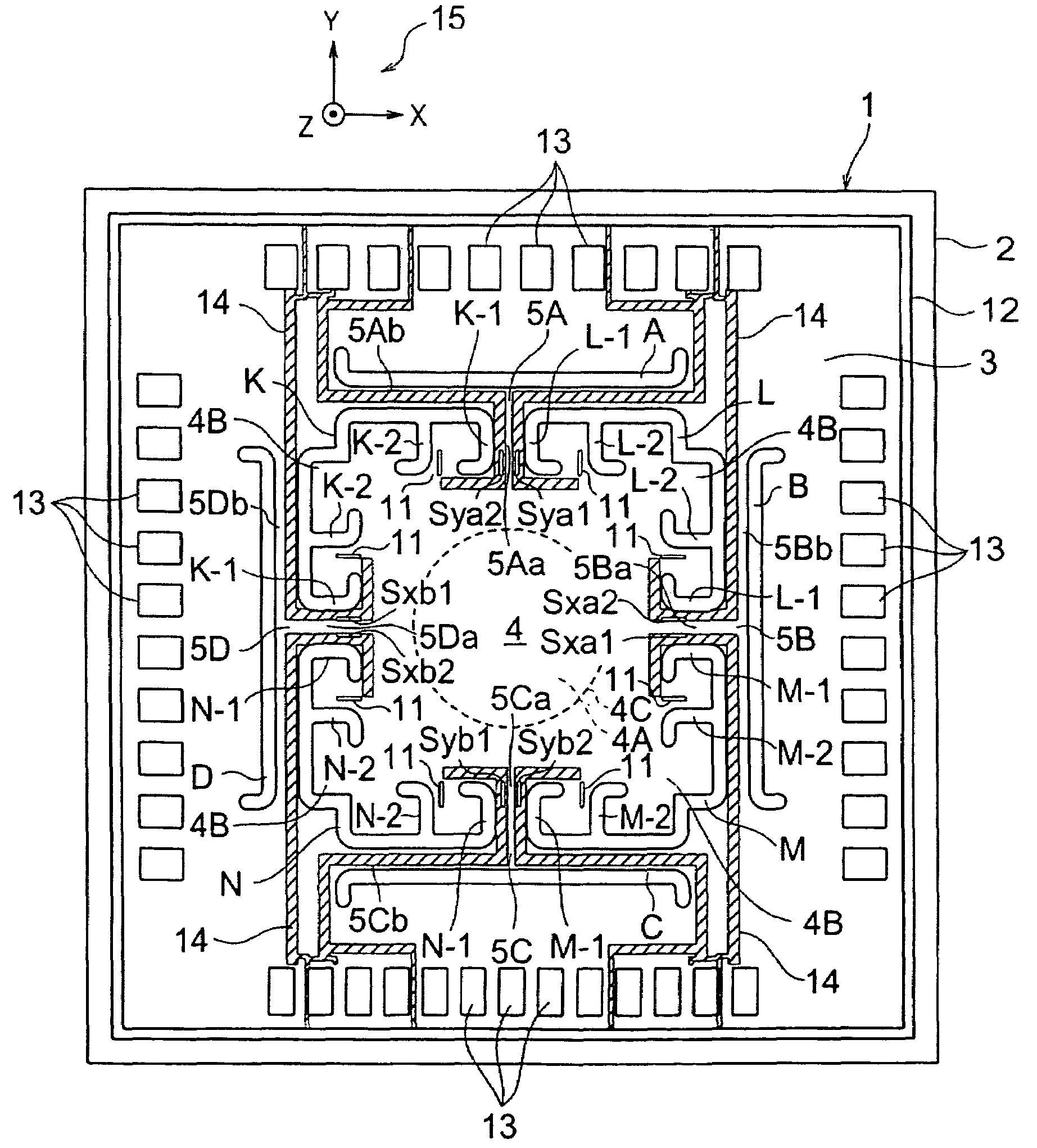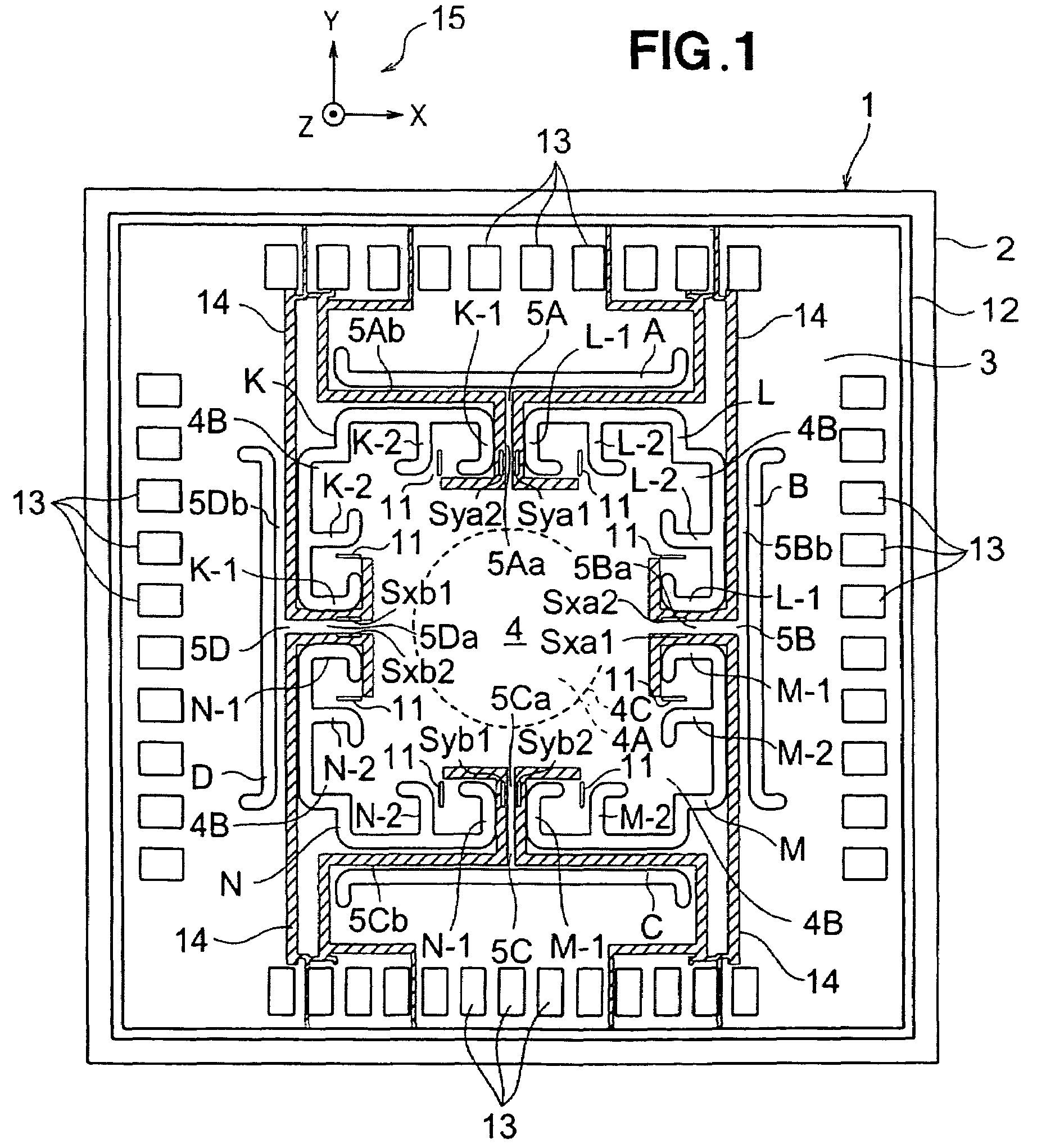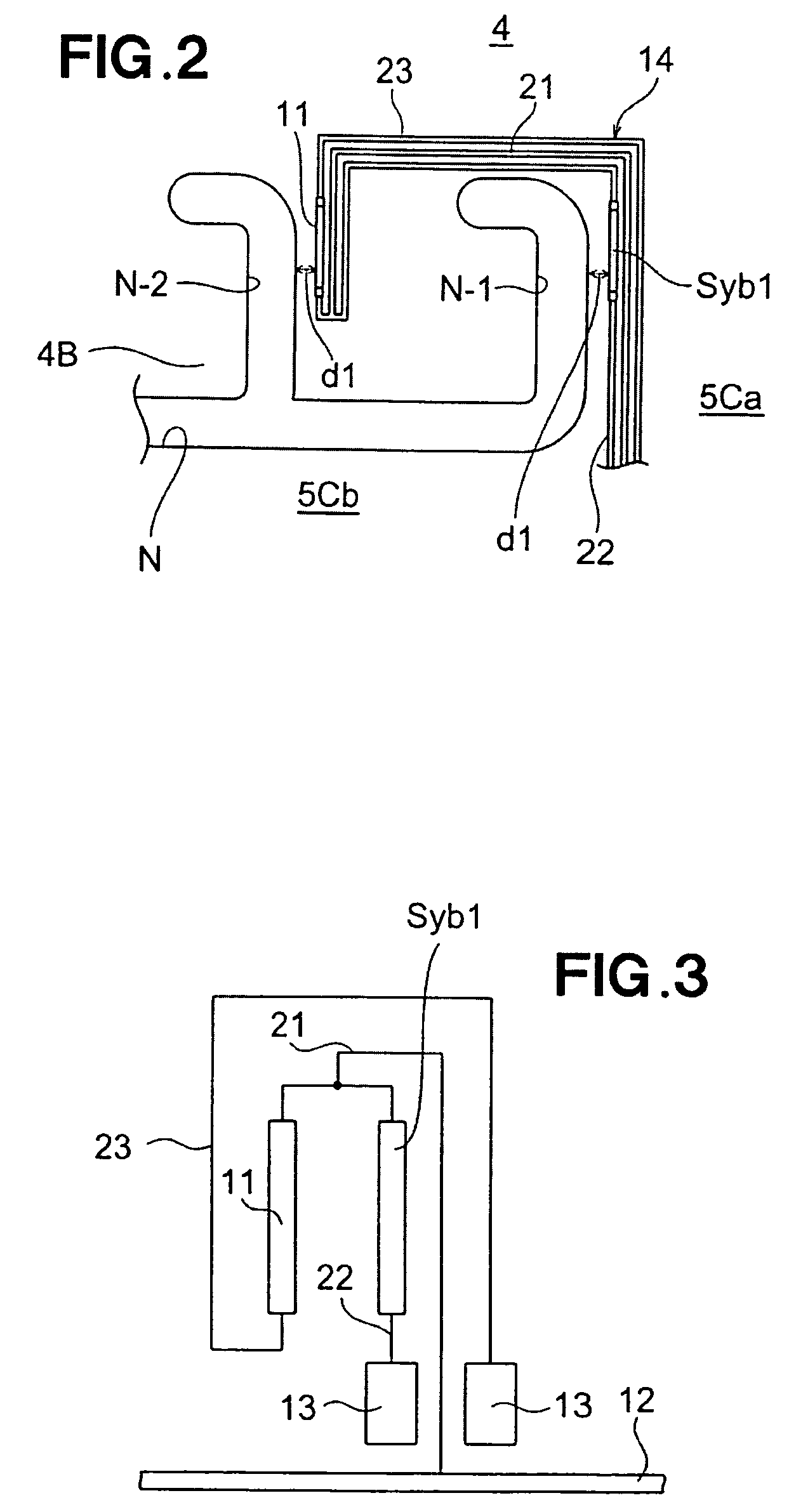Force sensor chip
a technology of force sensor and sensor chip, which is applied in the direction of stringed rackets, instruments, force/torque/work measurement apparatus, etc., can solve the problems of irregular initial resistance values (resistance values) of strain resistance elements, and achieve the effect of high accuracy
- Summary
- Abstract
- Description
- Claims
- Application Information
AI Technical Summary
Benefits of technology
Problems solved by technology
Method used
Image
Examples
Embodiment Construction
[0035]A typical embodiment of a force sensor chip according to the present invention will be described with reference to FIGS. 1 through 5. In this embodiment, a six-axis force sensor chip is given as an example of a force sensor chip. The force sensor chip of the present invention is not limited to a six-axis force sensor chip.
[0036]In FIG. 1, a six-axis force sensor chip 1 of the present embodiment is formed by a semiconductor substrate 2 that preferably has a square shape as viewed from above. The length of one side of the square semiconductor substrate 2 is, e.g., 5.5 mm. The substrate is not limited to a semiconductor substrate. The entirety of the six-axis force sensor chip 1 assumes the shape of a plate based on the semiconductor substrate 2.
[0037]When a semiconductor device is formed on the substrate 2, the six-axis force sensor chip 1 is preferably manufactured by forming holes and wires using a semiconductor manufacturing process technique (e.g., photolithography, ion impl...
PUM
| Property | Measurement | Unit |
|---|---|---|
| length | aaaaa | aaaaa |
| stress | aaaaa | aaaaa |
| external force | aaaaa | aaaaa |
Abstract
Description
Claims
Application Information
 Login to View More
Login to View More - R&D
- Intellectual Property
- Life Sciences
- Materials
- Tech Scout
- Unparalleled Data Quality
- Higher Quality Content
- 60% Fewer Hallucinations
Browse by: Latest US Patents, China's latest patents, Technical Efficacy Thesaurus, Application Domain, Technology Topic, Popular Technical Reports.
© 2025 PatSnap. All rights reserved.Legal|Privacy policy|Modern Slavery Act Transparency Statement|Sitemap|About US| Contact US: help@patsnap.com



